Glamping: Galmorous Camping for the Rich
Aug 19, 2007 (14 hours ago) Glamping: Glamorous Camping for the Rich |
Information and ideas for the Scouts, family, and friends of Boy Scout Troop #152
Aug 19, 2007 (14 hours ago) Glamping: Glamorous Camping for the Rich |
NoteCentric - http://www.notecentric.com/Web 2 Cool for school - A rundown of online applications for students by Download Squad
Organization is key when you have your head pushed in the books. This web based note taking application is an easy way to store and share class notes with friends and help your organization efforts. Account holders can easily invite friends to join in on certain notes for simple reading or collaboration purposes. NoteCentric also has RSS abilities, so sharing and reading through feed readers is possible.
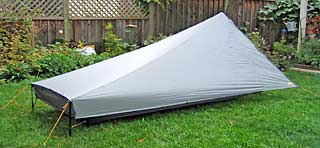
Lots of people on the PCT (Pacific Crest Trail) are using these kind of tents - including myself (I recently completed 560 miles). Many ultralight backpackers use a tarp instead of a tent and swear by it. That can be tricky to set up and doesn't keep all of the bugs off. The tarptent concept is based on the simplicity and lightness of a tarp, but made into a more traditional tent look. While Sierra Designs' one-person tent looks good, it weighs 2lbs 11oz. My Contrail tarptent is 24 oz. It's a single layer silnylon tent with a ground sheet and mesh all around the inside between the groundsheet and the tarp, top.
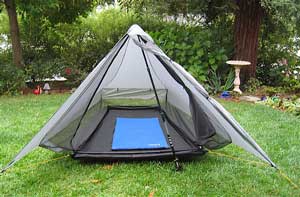
I use my trekking pole as the main upright. Set up took a while to figure out, but now I put it up and down in much less than 5 minutes. I can rig it for strong wind, too (it's designed to be storm rigged in need). It's great for the Sierras, but wouldn't be so suitable for wet climates. If you camp somewhere moist, like near a river, it can suffer from condensation. As such, I have learned to camp differently and now leave the door wide open all the time apart from the mosquito net. It hasn't rained much in the 2 months I have been hiking the PCT, but when it did, the tent was waterproof. You have to seal the seams yourself, but it is very easy to do so. The only modification I have done is to swap the standard 2 rear pegs for 9 in. ones, which work better especially in sand.
-- Carl Myhill
Tarptents
$170 - $255*
Available from Tarptent.com
[*Models are available with sewn-in floors or floorless; the latter is $30 cheaper and lighter -- sl]
BONUS TIP: Ultralight backpackers also frequently use a sheet of Tyvek as a groundsheet. This is the material used as a vapor barrier in house construction and as sails for boats. It is breathable and waterproof. I could only buy lengths of 165 ft. in Home Depot, but you can often pick it up at construction sites. I use my Tyvek underneath my tent for added protection (which is redundant overkill really) or if I am cowboy camping just under the stars with no tent. I also have it handy in my pack and pull it out whenever I rest -- it's really nice to sit on and it keeps the ants off (a little). It is VERY lightweight and very tough. Some backpackers report theirs having lasted 3 years and going nice and soft in the washing machine. The only thing I have heard of that is lighter or stronger is spinnaker cloth, but that's expensive. Tyvek groundsheets are $12 via Tarptents. If you are going hiking and need a small piece of this stuff just call Henry at Tarptents -- he sent me a bit whilst I was on the trail - Carl Myhill
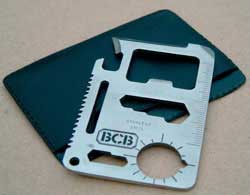
I have two friends who've been carrying these slim, multi-tools for a few years now and swear by them. I've only used the mini-screwdriver and bottle opener, but those functions alone seem worth it. It's stainless steel and will add some weight to your load, but no more than the average metal beverage pop-top. Why junk up your keychain when you can slip another "card" into your wallet? Added bonus: can opener, straight edge, knife edge, et al.
-- Steven Leckart
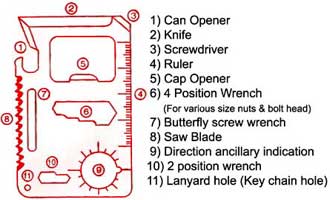
Credit Card Survival Tool
$12
Available from Fishboy
Manufactured by BCB Survival USA
[This item was previously available via Amazon, so you may want to check if it's back in stock -sl]
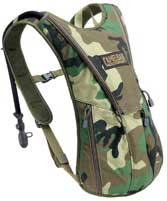
Most bikers and hikers know or have a CamelBak. What many don't realize, however, is the ones in most stores are 'consumer grade.' I've used them and they work great, but after a friend of mine showed me his military CamelBak (the "Viper" model), I purchased one and love it.
Instead of nylon, this pack is made of Cordura. It has never gotten scratched or torn despite some unplanned stops while biking (i.e. falling over). I landed on my back once; just got up, shook my head and continued on -- no damage to the CamelBak at all. Tough stuff.
Instead of a thin blue tube, on my Viper, the tube is made of a harder plastic that's not quite as bendy. It's also sheathed in a neoprene cover, which keeps the water in the tube from getting as warm (with an uncovered tube, you get a mouthful or two of warm water at first). Instead of a bite-down nozzle, mine ends in an on/off switch (a rotating stopper). Plus, the removable mouthpiece comes with a rubber cover that can be removed by the teeth or thumb while on the go. You never get a dusty mouthpiece.
Some CamelBaks are flat to the body, mine has two foam inserts along the side, which creates a recessed portion in the middle that reduces sweat build up. This bag weighs almost two pounds (without water), which is heavier than the classic CamelBak, but it also holds 102 oz. -- 30 oz. more than that same classic CamelBak. Also, some CamelBaks have a lot of available space for gear. The Viper doesn't have a ton of room, but I can still store a pump, patch kit, tire removal kit, a shirt, wallet and keys.
The feature I love the most -- and it's the simplest -- relates to the straps. On every backpack I own, the straps are too long to provide for adjustment. On my Viper, the straps are also adjustable -- but they've included is a little piece of Velcro. It's three times as wide as the roll strap, so after you adjust the strap just right, you roll up the strap around this Velcro strip and it closes on itself. Once you get it fitted right, you never have to deal with long, annoying straps all over the place. There are also d-rings on both sides of the shoulder straps to keep the tube from flapping all over the place, and a front chest strap.
My particular model typically costs half again as much as the consumer equivalent, but it's the CamelBak as it should be. The way I look at it, if you already have a CamelBak you like and use, great. For me, these are not 'consumption' goods -- I wanted one to last decades. And I know mine will outlast my biking life.
-- David Koonce
Viper CamelBak
$64
(also in black)
Available from Triple Nickel Tactical Supply
Manufactured by CamelBak Products, LLC
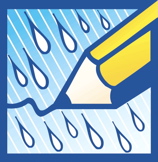
Whether you're a hiker, biker, backpacker, camper, naturalist or simply someone who's ever been caught in the rain, you'll treasure these classic all-weather notebooks. The cover is Polydura and the pages are made with a substrate, giving the paper a wax-y feel. The effect: water beads off them, meaning no pulpy mess and no bummer over any lost thoughts or data. They are not a new invention by any means. Back in the 1920s, they were developed for Pacific Northwest loggers. These days, the manufacturer makes both bound and spiral bound books in an impressive array of sizes and types (e.g birding!). I keep a pocket-size, 24-page, staple bound mini-book in the small pack I take cycling and hiking. In the event of a downpour, all my ah-ha moments are safe. If you plan to be in really harsh conditions and want to go the extra mile, you might try one of their all-weather pens. Note: I have not used them -- a pencil or standard ballpoint does the trick for me.
-- Steven Leckart
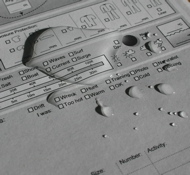
You can also buy waterproof paper for inkjet and laser printers. The laser prints are completely waterproof. The inkjet prints need to dry for about a day or so, and may still bleed a bit if immersed in water, or kept in close proximity to something wet for a prolonged period. Still, this is a useful way to make maps, forms, signs or any documents that will be outside exposed to the elements. As a bonus, the paper is also stronger and more tear-resistant, making it ideal for print-outs that you'll be using over and over (like maps).
-- Leszek Pawlowicz
Rite in the Rain Notebooks
$2
(Mini Notebook)
Available from Backpacking Light
$4+
Other sizes/types available from Amazon
Manufactured by J.L. Darling Corporation
For most, there is no singular magic moment; instead, there are many smaller insights accumulated over time. The internet required nearly 40 years of innovations in electronics, networking, and packet-switching software before it even approximated the system Tim Berners-Lee used to create the World Wide Web. The refrigerator, the laser, and the dishwasher were disasters as products for decades before enough of the barriers—cultural and technological—were eliminated, each through insights of various kinds, to make them into true business innovations. Big thoughts are fun to romanticize, but it's many small insights coming together that bring big ideas into the world.The Myths of Innovation is a must-read for creative types searching for their muse—and anyone who want to understand more about the world we live in. Pick up a copy at Amazon or browse excerpts over at O'Reilly.